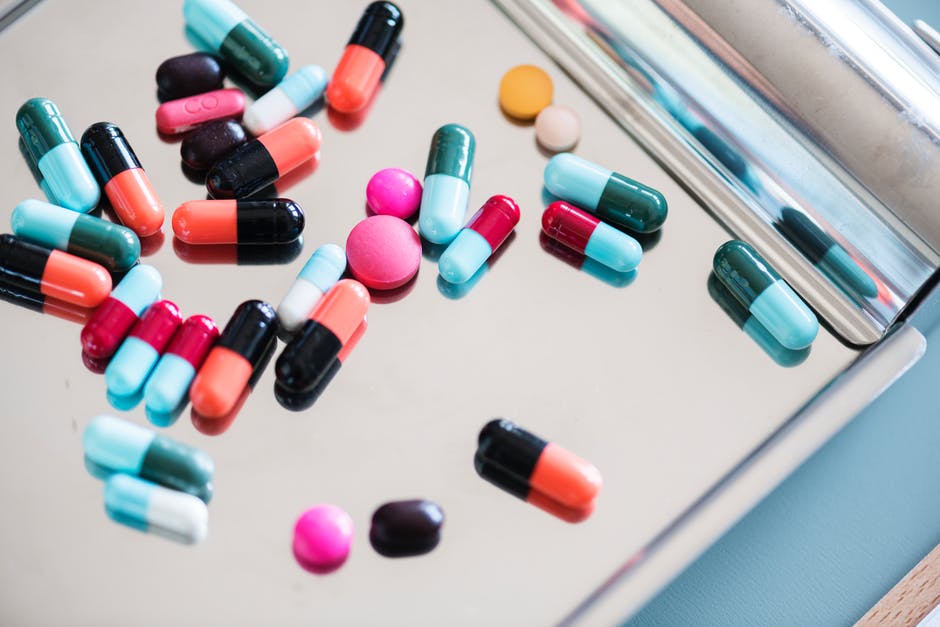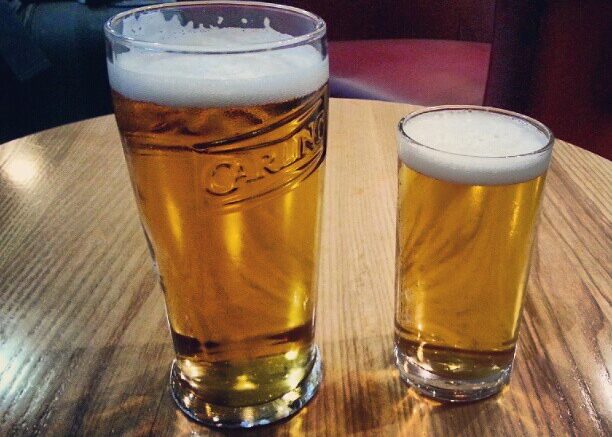Mixing alcohol with any medication, including paracetamol may cause damage to your liver, so it’s always best to be cautious with drinks. However, as Dr. Claudio Butticè suggests, in the specific case of this drug, things can be a bit more complicated since some studies suggested a protective effect of paracetamol against liver toxicity caused by alcohol.
In this article, we’ll discuss whether taking paracetamol (chemically known as acetaminophen) and alcohol together is dangerous or not, and what are the most immediate consequences. The expertise and advice of Dr. Claudio Butticè, Pharm.D., will help us navigate through this complex topic.
Why Could You Mix Paracetamol And Alcohol?
Paracetamol is sold as an over-the-counter (OTC) medication, so it’s often wrongly regarded as a safe drug that could be taken without particular caution. Alcohol itself is a dangerous substance on its own, although it is often consumed for social and recreative purposes regardless of the effects it has on the liver (even in small quantities). Many people take paracetamol and alcohol without checking if this is safe or has any medical complications associated with it. There are a few reasons why people take these two substances together. Given below are 4 major reasons:
- Ignorance: Some people simply assume that taking paracetamol and alcohol (which are both pain relievers) together will have a combining effect and help reduce even more pain. This is a completely wrong assumption.
- Addiction: An addict just can’t reason properly. They will take as much alcohol or paracetamol as they want.
- Curing a hangover: After partying all night, they wake up the next day with a terrible hangover and the first thing they do is take some paracetamol to reduce the pain.
- Lack of knowledge on drugs: There are simply too many drugs that contain acetaminophen and many people buy these drugs without knowing what ingredients are in them, thereby unknowingly consuming acetaminophen.
Is it Dangerous to Mix Acetaminophen and Alcoholic Drinks?
In general, if a therapeutic, non-toxic dose of paracetamol is taken with a moderate amount of alcohol (e.g. a beer), these two substances do not interact with each other in a way that could pose any danger to one’s health. So yes, you can safely drink a glass of wine after taking a tablet of Panadol, although you may experience mild symptoms such as headache or nausea. However, the situation is a bit more complicated than this.
In fact, there’s an interaction between alcohol and acetaminophen, but it is not well studied, and it changes depending on whether the alcohol consumption is chronic or acute. While acute alcohol consumption should protect the liver from the inherently dangerous effects of acetaminophen, chronic assumption (such as in the case of alcoholics) actually expose this organ to additional damage. However, toxicity may occur due to the reduction of other, critical enzymes (such as glutathione) that protect the liver from damage.
In simpler terms, it may potentially be dangerous to take alcohol and paracetamol together, but neither the specific reactions or chemical combination have never been properly researched. However, we know very well how overdosing on either of the two substances can severely damage the liver, so it’s safe to assume that assuming them in large doses at the same time may be quite dangerous.
According to the NHS (National Health Service), it is safe to drink a reasonable and clinically standard amount of alcohol only if you are taking common acetaminophen-containing drugs that can be bought at any online medical store. It is strongly advised not to drink alcohol if you are taking prescription drugs because this can increase the side effects of the medication.

Why is it dangerous to overdose on either substance?
Overdosing on acetaminophen
When you take paracetamol, it is absorbed into your bloodstream through the small intestine and the stomach and then passed into the liver. There are certain enzymes which turn most of the drug into a useful and less harmful form that helps in relieving headaches before eventually being excreted from the body through urine.
This useful form of acetaminophen releases certain chemical substances as by-products during the process of relieving pain and being excreted from the body.
One of these by-products ends up turning into a dangerous and toxic chemical compound that can damage the cells and tissues of the liver, but what protects is a substance produced by the liver (glutathione) which acts to neutralize the toxic chemical compound. Overdosing on paracetamol causes what is known as hepatotoxicity (paracetamol poisoning).
Overdosing on alcohol
Just like paracetamol, alcohol is a substance that is acted upon by the liver. Alcohol is broken down into a less harmful substance by a group of enzymes in the liver. What isn’t broken down is passed into the bloodstream and causes intoxication (or you may know it as being drunk). But just like acetaminophen, in the process of breaking down it releases some toxic by-products. These toxic by-products are also neutralized by glutathione (GSH) in the liver. Drinking too much alcohol over a long time period causes what is commonly known as alcoholic liver disease as well as many bladder issues.
The result of combining both substances
We know the effects of taking large amounts of either substance, so we can infer from that what happens when you combine them.
On one hand, acute assumption of alcohol can actually reduce the amount of paracetamol that is broken down by the human body into potentially dangerous metabolites. In other words, it can be beneficial. But it’s not as easy as it seems! Timing and dosage here are key, and consuming large quantities of either one of these substances, or mixing them at the wrong time can be rather harmful to your health. It is much better to assume that their interaction can fall into the “dangerous for your health” scenario, rather than focus on that incredibly small window of timing and dosage where it can reduce the negative effects of the drug.
Both paracetamol and alcohol produce substances that are harmful to the liver, and these toxic substances are neutralized by an enzyme known as glutathione. But there is a limited supply of glutathione in the liver so taking them together has the effect of weakening the level of resistance you have to either substance. This may leave you vulnerable to the negative effects that can be seen from overdosing on either alcohol or paracetamol. This interaction can be even more dangerous if consumption of large doses of alcoholic beverages is chronic or regular (such as in the case of alcohol addiction).
To sum it up, there’s no conclusive evidence that therapeutic doses of paracetamol may increase hepatotoxicity in patients drinking moderate amounts of alcohol. Nonetheless, abusing one of these two substances is harmful on its own, and combining them in excess dosages, may cause synergistic damage to the liver itself.
Is it dangerous to take paracetamol and alcohol if you have cold or influenza?

It may occur that you get prescribed paracetamol for the home management of common seasonal infections such as the cold or the flu (influenza). Whenever you receive this recommendation, you might ask yourself if drinking an alcoholic beverage may be a good idea or not. In this case, there are no doubts: it’s NOT a good idea. Regardless of the interactions with acetaminophen, taking alcohol while you’re infected is always a bad idea. Its consumption might impair your immune system and weaken your natural defenses, so you only have more reasons not to do that.
Most commonly used medications that contain acetaminophen in the US
Acetaminophen is the most widely used drug ingredient in America and there are so many drugs that use it. They may be prescription medicines or OTC drugs which can be used without a prescription. In Europe, acetaminopen is also often called paracetamol and it’s available in many generic forms. It is also used in a variety of dosage forms (capsules, solutions, suppositories, tablets) and formulations (extended-release, film coated, quick-release, orally disintegrating), both alone and in association with other drugs such as codein, caffeine, ephedrine, and hydrocodone. Here is a list of the most common drugs containing this substance, including the generic names:
- Panadol
- Robitussin
- Sudafed
- Theraflu
- Aspirin-Free Singlet
- Triaminic
- Excedrin
- Sedapap
- Tapanol
- Tylenol
- Ultracet
- Vicodin
- Tylox
- Acetaminophen
- Paracetamol
- Phenacetin
- Acetanilid
- Anacin
- Codamol
- FeverAll
- Acephen
- Tachipirina
Side effects of taking alcohol and paracetamol
- Reduction of glutathione: This is the main side effect and the reason why other negative effects start to set in. Glutathione helps to protect us from the negative side effects of using too much of either alcohol or paracetamol. When this substance is depleted the liver becomes unprotected and the toxic substances from both alcohol and paracetamol start to damage the liver. This may also increase the risk of complications from COVID-19 (see above).
- Hepatotoxicity: This is also commonly referred to as paracetamol poisoning. This is caused by excessive use of paracetamol, but in this case, alcohol has weakened the resistance to paracetamol thereby making the body much more sensitive to the toxic substance in alcohol.
- Weakness and fatigue
- Weight loss
- Nausea
- Vomiting
- Headache
- Jaundice : a yellow or greenish discolouration of the skin caused by high amounts of bilirubin circulating in the bloodstream.
Final Words
By now, hopefully, you know the answer to the question, “Is it dangerous to use paracetamol and alcohol?”. If you need to cure a hangover, probably another NSAID such as ibuprofen is a safer choice than Panadol or similar medications. In a nutshell, try to avoid the combination of alcohol and paracetamol and stay safe!
About the authors:

Dr. Claudio Butticè, Pharm.D., is a former Pharmacy Director who worked for several large public hospitals in Southern Italy, as well as for the humanitarian NGO Emergency. He is now an accomplished book author who has written on topics such as medicine, technology, world poverty, human rights, and science for publishers such as SAGE Publishing, Bloomsbury Publishing, and Mission Bell Media. His latest books are “Universal Health Care” (2019) and “What You Need to Know about Headaches” (2022). A data analyst and freelance journalist as well, many of his articles have been published in magazines such as Cracked, The Elephant, Digital Journal, The Ring of Fire, and Business Insider. Dr. Butticè also published pharmacology and psychology papers on several clinical journals, and works as a medical consultant and advisor for many companies across the globe.

Natalie and Caitlyn Bell are the founders of Healtholine. They started Healtholine to provide a platform where they could share informative articles related to health, fitness, beauty, weight loss etc Natalie is a featured author at various authoritative blogs in the health and fitness industry. Connect with both sisters to know more.
Article edited and fact checked by our editorial team
References
- Garry G. Graham, Kieran F. Scott, Richard O. Day. Alcohol and Paracetamol. NPS Medicinewise. https://www.nps.org.au/australian-prescriber/articles/alcohol-and-paracetamol
- National Health Service(NHS). Can I drink alcohol if I’m taking pain Killers? https://www.nhs.uk/common-health-questions/medicines/can-i-drink-alcohol-if-i-am-taking-painkillers/
- Acetaminophen Awareness Coalition; www.KnowYourDose.org
- Dr Okechuckwu Amako. Taking paracetamol after drinking alcohol: Why you should be careful. Medium. https://medium.com/@swiftcheckup/taking-paracetamol-after-drinking-alcohol-why-you-should-be-careful-58a9c2f3066d
- Denison, H., Kaczynski, J., & Wallerstedt, S. (1987). Paracetamol medication and alcohol abuse: A dangerous combination for the liver and the kidney. Scandinavian Journal of Gastroenterology, 22(6), 701–704. https://doi.org/10.3109/00365528709011146
- Zimmerman, H. J., & Maddrey, W. C. (1995). Acetaminophen (paracetamol) hepatotoxicity with regular intake of alcohol: Analysis of instances of therapeutic misadventure. Hepatology, 22(3), 767–773. https://doi.org/10.1002/hep.1840220312
- Sestili P., Fimognari C., 2020. Paracetamol-Induced Glutathione Consumption: Is There a Link With Severe COVID-19 Illness? Front. Pharmacol., 07 October 2020.
Article updated on February 26, 2024
